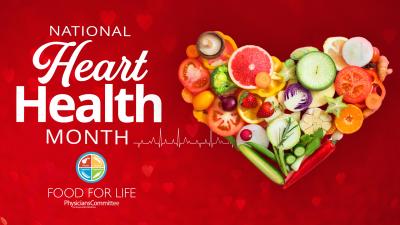Five Takeaways on the White House and Big Food
Here’s a simple answer: Taking on Big Food is a bigger challenge than any presidential administration can tackle alone. What hindered the White House from making certain food policy changes that could have helped Americans fight obesity, diabetes, heart disease, and other chronic diseases caused by meat and dairy products?
Below, I’ve paraphrased some of the problems Pollan identified and my suggestions for possible solutions. He also identified a positive trend: Where the president couldn’t prevail against Big Food, the public is seeing success.
-
Industries including the beef slaughter and chicken processing industry are "dominated by a small number of gigantic firms ... represented in Washington by one or more powerful lobbying organizations," he says. Big Meat spent "$9 million on lobbying in 2010—not including political contributions to members of the agriculture committees in Congress."
My Take: Well-heeled lobbyists represent industries that promote disease-causing animal products. Not so long ago, the tobacco lobby was equally formidable. But the science showing the dangers of tobacco was more powerful than the tobacco lobby. Public health officials spoke up, and the government cracked down on the tobacco industry. The science showing the dangers of meat is equally powerful. It’s time for the U.S. government to stand up against meat, egg, and dairy industry lobbyists.
-
"Big Ag in turn supplies the feed grain for Big Meat ... A substantial portion of what we spend on health care in this country goes to treat chronic diseases linked to diet."
My Take: A broken subsidy system supplies disease-fighting grains to Big Meat for animal feed instead of for human consumption. Meat and dairy subsidies make America sick. A recent study in JAMA Internal Medicine found that “current federal agricultural subsidies focus on financing production of food commodities, a large portion of which are converted into high-fat meat and dairy products” and other items that increase the risk for cardiometabolic risks in American adults.
-
"Big Food’s biggest victory ... was its success in derailing voluntary guidelines for marketing food to kids."
My Take: Malevolent junk food marketers encourage the consumption of meaty, cheesy fast-food and other junk food. We don’t need voluntary guidelines. We need regulations. Big Food is getting sneaky. McDonald’s recently introduced Olympic-inspired trackers (that were eventually recalled for causing rashes) to “push back at critics who've painted the business as pushing junk food to kids.” But adding a fitness tracker to an order of burgers and fries doesn’t change the fact that McDonald’s is still pushing burgers, chicken nuggets, and fries—all junk food—to kids.
-
"The food industry even managed to undermine the Healthy, Hunger-Free Kids Act."
My Take: Big food pushed unhealthy school lunches. The Healthy, Hunger-Free Kids Act is a step in the right direction, but doesn’t go far enough to get chicken nuggets and cheeseburgers out of school lunches. Our report “Who’s Making Money from Overweight Kids?” found that meat and dairy industry makes money when the U.S. Department of Agriculture and School Nutrition Association promote junk foods—such as nachos, chicken wings, and pepperoni pizza—in school lunches.
-
"While Big Food can continue to forestall change in Washington, that strategy simply will not succeed in the marketplace."
My Take: Consumers are demanding changes that Big Food can’t ignore. As I wrote in The Hill this week: It’s clear that public health organizations, big business, and the tech industry are all working toward helping consumers get healthy by shifting from meaty meals to plant-based diets.









